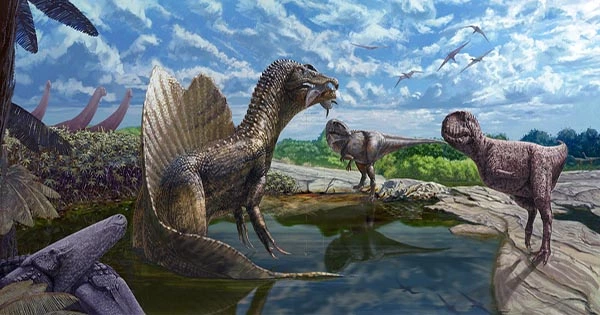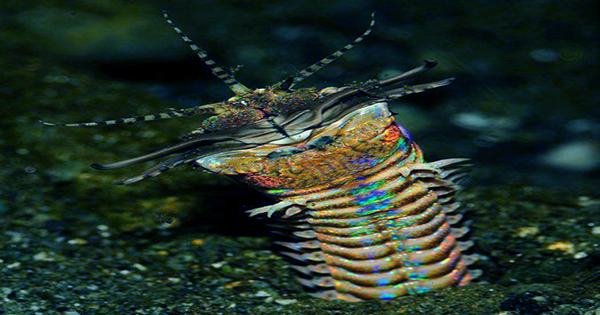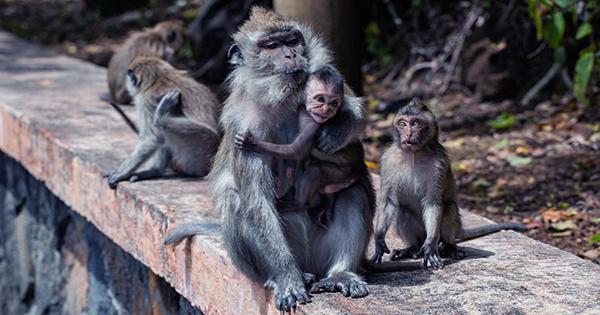It possessed a jaw and teeth the size of a killer whale, a tail resembling a shark, and a body resembling a Komodo dragon. In some ways, it is just like the vicious chimera from ancient mythology that it sounds like. Thalassotitan atrox, a recently found sea monster from 66 million years ago, is far more scientifically accurate and amazing in this regard.
In a statement, Nick Longrich, Senior Lecturer from the Milner Centre for Evolution at the University of Bath, described Thalassotitan as “a wonderful, scary species.” He is the primary author of a report that details the discovery of the new prehistoric titan and was published on Wednesday in the journal Cretaceous Research.
Technically speaking, it is a mosasaur rather than a dinosaur: a large marine reptile closely related to modern monitor lizards and iguanas. However, they were capable of reaching lengths of up to 12 meters (40 feet), unlike modern monitor lizards and iguanas. In actuality, the new find is almost nine meters (30 feet) long, with a massive skull that is 1.4 meters (5 feet) of that length. It consumed a variety of foods, ranging from small fish to sea turtles and other enormous marine reptiles, on a regular basis.
The fact that some of the beast’s victims may have been discovered with its fossilized remains helps us to understand that. The researchers discovered huge fossils of large predatory fish, a sea turtle, the half-meter-long head of an elasmosaur, a plesiosaur species that resembles a hybrid of a brachiosaurus and a turtle, and the jaws and heads of at least three different mosasaur species in the same bed. Acid—possibly the stomach acid of the Thalassotitan—damaged them.
It is circumstantial evidence, Longrich declared. The exact sort of animal that consumed all of these other mosasaurs is unknown.
But, he continued, “we have the remains of marine reptiles that were killed and consumed by a huge predator.” Thalassotitan, a species of mosasaur that is specialized to prey on other marine reptiles, is found in the same area and fits the profile of the murderer. Most likely, that is not a coincidence.
It appears that these enormous carnivores posed a threat to even fellow Thalassotitans. Thalassotitan seems to have been particularly belligerent, with injuries described as “exceptionally common” and intense. Mosasaurs generally have evidence of violent injuries to their faces and jaws, war wounds from fighting over feeding grounds or mates, but Thalassotitan seems to have been extra belligerent.
Thalassotitan was discovered in Morocco, a nation already renowned for having the most diversified mosasaur fauna in the world, and its finding highlights the amazing diversity of Cretaceous-era Africa.
In a blog post on the discovery, Longrich speculated that “it’s possible about 20 to 25, or perhaps 30 species existed here.” “While that may seem excessive, keep in mind that there are currently 26 cetaceans residing off the coast of Morocco. Why not the same amount of mosasaurs?
But it’s also a hint to a long-debated issue in paleontological circles: what was happening prior to that catastrophic asteroid strike?
See, the Cretaceous-Paleogene (K-Pg) extinction event, which saw roughly three out of every four species abruptly go extinct due to a meteorite hit, fits in pretty well with 66 million years ago. With very few exceptions, practically no tetrapods measuring over 25 kilograms (55 pounds) survived.
Because of how disastrous this incident was, some academics have hypothesized that biodiversity on Earth was already declining before the End because species were becoming extremely specialized and static and couldn’t adapt to any unexpected changes in their ecology. Yes, the asteroid dealt the death blow, but the impact might not have been as fatal had it occurred at a different moment in history or under different conditions.
Thalassotitan, on the other hand, “emphasizes exactly how diversified the mosasaurs were,” according to Longrich. It implies the existence of “a highly diversified, functional ecosystem that was essentially destroyed by a single, catastrophic, entirely unforeseen catastrophe in a matter of weeks and months.”
He continued, “This view of evolution is terrifying. “We’d like to believe that life is somewhat predictable and orderly. The scenario presented here suggests that it is not predictable. There’s no hierarchy. Even if everything is going well, you could suddenly disappear off the face of the world, as if you had been struck by lightning (or hit by an asteroid). Things happen.
















